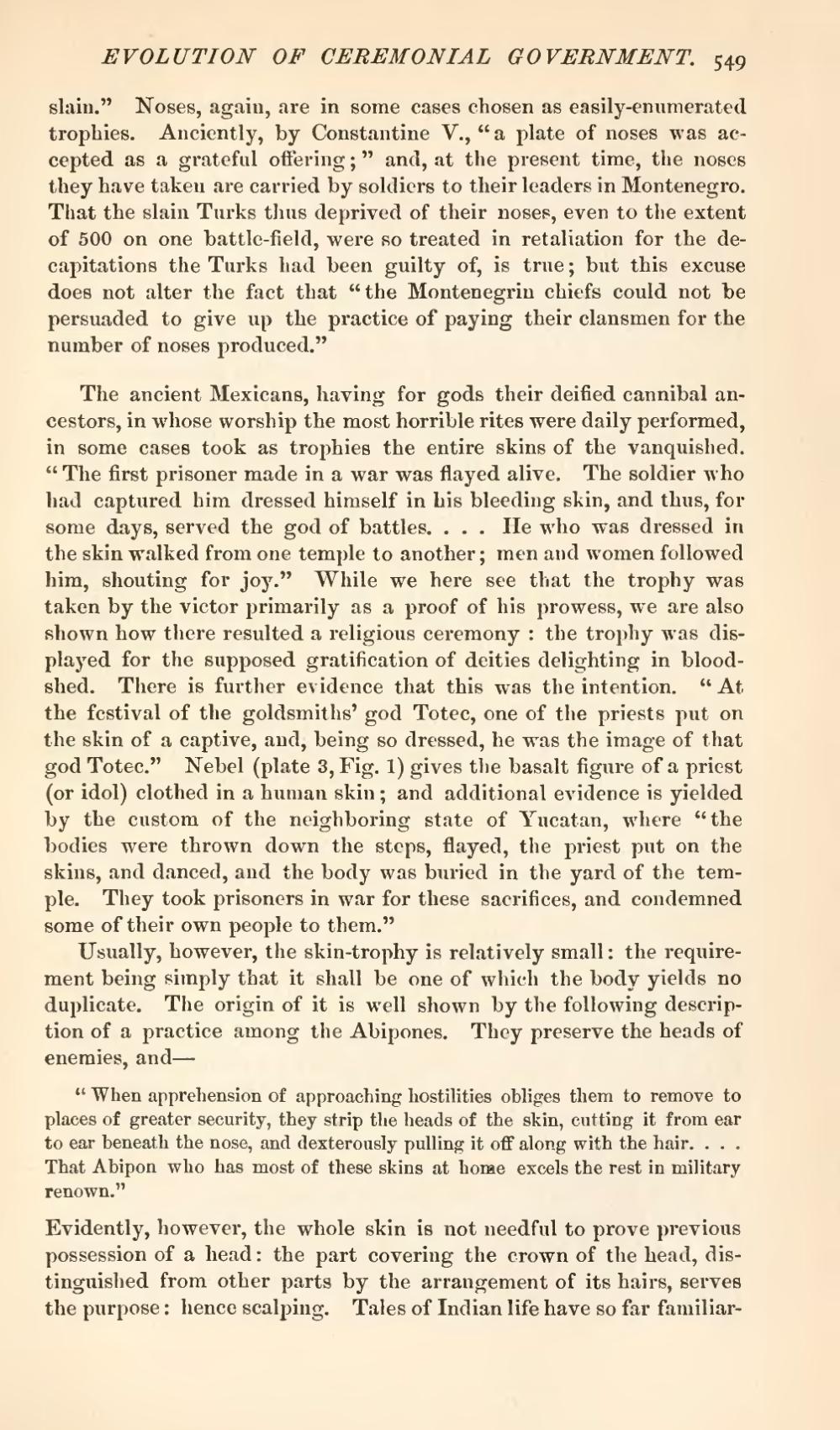slain." Noses, again, are in some cases chosen as easily-enumerated trophies. Anciently, by Constantine V., "a plate of noses was accepted as a grateful offering;" and, at the present time, the noses they have taken are carried by soldiers to their leaders in Montenegro. That the slain Turks thus deprived of their noses, even to the extent of 500 on one battle-field, were so treated in retaliation for the decapitations the Turks had been guilty of, is true; but this excuse does not alter the fact that "the Montenegrin chiefs could not be persuaded to give up the practice of paying their clansmen for the number of noses produced."
The ancient Mexicans, having for gods their deified cannibal ancestors, in whose worship the most horrible rites were daily performed, in some cases took as trophies the entire skins of the vanquished. "The first prisoner made in a war was flayed alive. The soldier who had captured him dressed himself in his bleeding skin, and thus, for some days, served the god of battles. . . . He who was dressed in the skin walked from one temple to another; men and women followed him, shouting for joy." While we here see that the trophy was taken by the victor primarily as a proof of his prowess, we are also shown how there resulted a religious ceremony: the trophy was displayed for the supposed gratification of deities delighting in bloodshed. There is further evidence that this was the intention. "At the festival of the goldsmiths' god Totec, one of the priests put on the skin of a captive, and, being so dressed, he was the image of that god Totec." Nebel (plate 3, Fig. 1) gives the basalt figure of a priest (or idol) clothed in a human skin; and additional evidence is yielded by the custom of the neighboring state of Yucatan, where "the bodies were thrown down the steps, flayed, the priest put on the skins, and danced, and the body was buried in the yard of the temple. They took prisoners in war for these sacrifices, and condemned some of their own people to them."
Usually, however, the skin-trophy is relatively small: the requirement being simply that it shall be one of which the body yields no duplicate. The origin of it is well shown by the following description of a practice among the Abipones. They preserve the heads of enemies, and—
"When apprehension of approaching hostilities obliges them to remove to places of greater security, they strip the heads of the skin, cutting it from ear to ear beneath the nose, and dexterously pulling it off along with the hair. . . . That Abipon who has most of these skins at home excels the rest in military renown."
Evidently, however, the whole skin is not needful to prove previous possession of a head: the part covering the crown of the head, distinguished from other parts by the arrangement of its hairs, serves the purpose: hence scalping. Tales of Indian life have so far familiar-

